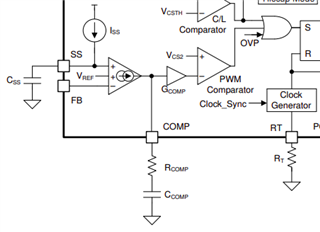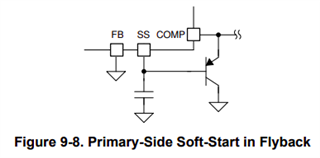Other Parts Discussed in Thread: LM5155EVM-FLY, , LM5155, PMP22764
Tool/software:
I am designing a few different isolated flyback converters using the LM51551. I have been testing with the LM5155EVM-FLY evaluation module, but have a few questions regarding the different soft start mechanisms.
1) I'm having a hard time understanding the function of the SScap when the LM5155(1) is used in a flyback topology with isolated feedback. In documentation it is stated that the SScap is required as the primary soft start mechanism in all designs. I understand the function of the SScap in designs where the FB pin is used as the feedback of the system, however, in an isolated flyback design the FB pin is unused and the error amplifier is bypassed using the COMP pin. Does this bypassing not also make the SScap redundant in this design?
2) Why does using a primary side soft-start mechanism (shown in figure 9-8 of the LM5155x datasheet) result in an overshoot of the output voltage. In this design the SScap does make sense to me as it allows the transistor to start conducting slowly. An overshoot is a known downside of a primary side soft-start and I have observed this during testing, but I am unable to understand why this is happening. As I see it the optocoupler is not hindered by the transistor and is still able to pull down the COMP pin once the desired output voltage is required, however this does not seem to be the case.
Another (somewhat related) question I had was: Is the PGOOD pin not usable in isolated flyback designs as it is based on the FB pin?
Thanks in advance

